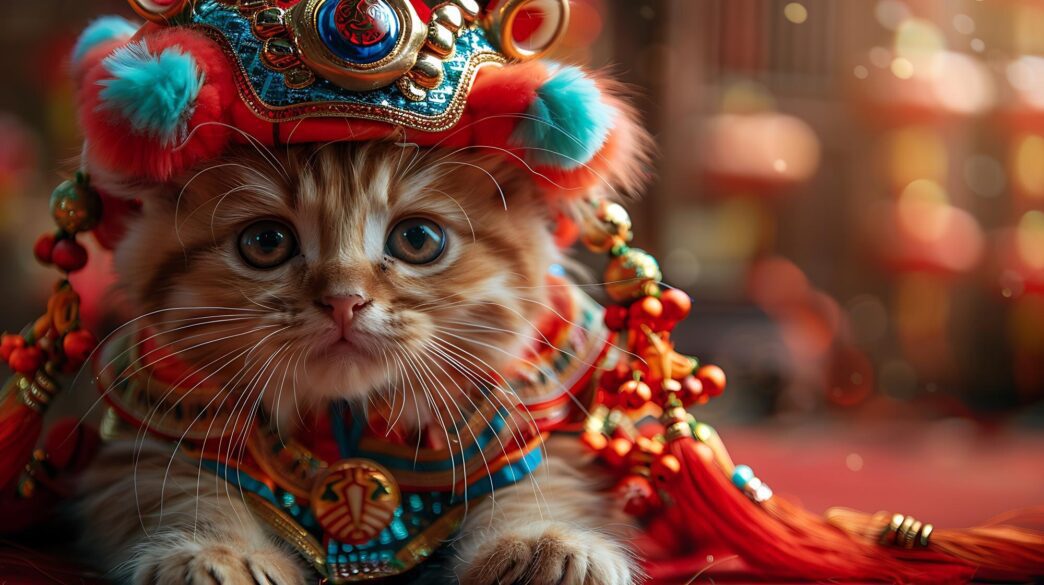Quick Takeaway
Animal & Element Origin
Impact on Personality
Diverse Interpretations
The enduring mystery of why the beloved Cat is conspicuously absent from the twelve-animal cycle of the Chinese Zodiac is rooted in a popular ancient folktale involving the Jade Emperor’s Great Race, a pivotal event where the quick-witted Rat notoriously deceived both the hardworking Ox and the unsuspecting Cat, forever altering the cosmic lineup and establishing a millennia-old rivalry that resonates through East Asian cultures to this day. This foundational myth explains the Cat’s exclusion and provides a rich narrative for its eternal animosity towards the Rat, offering a fascinating glimpse into the moral lessons and cultural values embedded within Chinese astrological traditions.
The Jade Emperor’s Divine Decree: The Great Race
According to legend, the Jade Emperor, ruler of Heaven, decided to designate twelve animals to guard the celestial gates, thereby creating the Chinese Zodiac. To determine the order, he announced a great race across a swift river, promising that the first twelve animals to cross would earn a place in the zodiac calendar. This divine decree set the stage for an epic competition, drawing creatures from all corners of the earth to vie for immortality and honor.
All the animals eagerly prepared for the race, each strategizing how to best navigate the challenging course. The Emperor’s challenge was not merely a test of speed but also of wit, perseverance, and character, qualities that would ultimately define the symbolic attributes of each zodiac sign.
The Rat’s Cunning Betrayal and the Cat’s Fateful Sleep
The Unlikely Alliance
Among the many hopefuls were the Rat and the Cat, who, in some versions of the tale, were once good friends. Both were poor swimmers, and knowing the river would be a significant obstacle, they decided to form an alliance. They approached the kind and powerful Ox, who, despite his immense strength, was also a gentle and generous creature.
The Rat and the Cat convinced the Ox to carry them across the river on his back, promising to sing songs and keep him company during the arduous journey. The Ox, being compassionate and obliging, readily agreed to their proposal, unaware of the treachery that was about to unfold.
The Rat’s Deception
As the Ox neared the opposite bank, just moments from crossing the finish line, the cunning Rat saw its opportunity. In a swift and selfish move, the Rat pushed the Cat off the Ox’s back and then leaped over the Ox’s head, landing first on the shore. This act of betrayal secured the Rat the very first position in the zodiac, leaving the strong and steady Ox to claim the second spot.
The Cat, having been plunged into the river, struggled to swim and was swept downstream. By the time it managed to claw its way to shore, the race was long over, and all twelve positions in the zodiac had been filled. The Cat’s exclusion was a direct consequence of the Rat’s deceit.
The Enduring Grudge: Rat vs. Cat
Upon realizing what had transpired, the Cat was consumed by rage and humiliation. It vowed eternal hatred for the Rat, a rivalry that, according to the myth, continues to this day. This explains why cats are said to hunt rats relentlessly, a cultural explanation for a natural predator-prey relationship.
The story serves as a cautionary tale about betrayal and the consequences of trusting those with ulterior motives. It also highlights the importance of vigilance, as the Cat’s trusting nature and eventual nap led to its downfall.
Variations of the Myth: The Vietnamese Exception
While the core narrative of the Cat’s exclusion is widely accepted across most East Asian cultures, there are fascinating regional variations. The most notable exception is the Vietnamese Zodiac, which includes the Cat as one of its twelve animals, replacing the Rabbit.
The reason for this substitution is debated, with theories ranging from linguistic misunderstandings (the Chinese word for Rabbit, Mǎo, sounding similar to the Vietnamese word for Cat, Mẹo) to local cultural preferences and adaptations of the original Chinese narrative. In the Vietnamese version, the Cat is often depicted as a symbol of grace and good luck, demonstrating how cultural context can subtly reshape ancient myths.
Why Twelve Animals? The Cosmic Significance
The selection of twelve animals for the zodiac is not arbitrary. In ancient Chinese cosmology, the number twelve holds profound significance, aligning with the twelve earthly branches (Dìzhī), the twelve months of the year, and the twelve two-hour periods of the day. Each animal is believed to embody specific characteristics and influences, contributing to a cyclical understanding of time, personality, and destiny.
The animals were chosen to represent a diverse array of traits and natural phenomena, from the powerful Dragon to the humble Pig. Their order is also significant, reflecting a narrative flow and the interplay of different energies. The Cat, despite its beloved status as a companion animal in many cultures, simply did not make the final cut in the dominant Chinese narrative.
The Cat’s Place in Chinese Culture (Despite Absence)
Despite its exclusion from the official zodiac cycle, the Cat holds a cherished, albeit different, place in Chinese culture. Cats are widely regarded as symbols of good luck, wealth, and protection against evil spirits. Their presence in homes is often associated with prosperity and peace, particularly in the form of the popular “Maneki-neko” or “beckoning cat” statues, though this is primarily a Japanese cultural icon that has spread globally.
In China, cats are admired for their elegance, independence, and ability to hunt pests. While they may not have a zodiac sign, their positive associations in folklore and daily life underscore their enduring appeal and importance, proving that an animal’s cultural significance isn’t solely tied to its zodiac status.
Conclusion: A Timeless Tale of Fate and Friendship
The myth of why the Cat missed the Chinese Zodiac is more than just an origin story for an astrological system; it’s a timeless tale that explores themes of friendship, betrayal, and the unpredictable nature of fate. It explains a deep-seated cultural rivalry between two common animals and highlights the diverse ways different cultures adapt and interpret shared legends. While the Cat may not be among the twelve revered animals, its story remains a compelling and integral part of the rich tapestry of Chinese folklore, reminding us that even the most beloved creatures can sometimes be outsmarted by cunning and circumstance.








